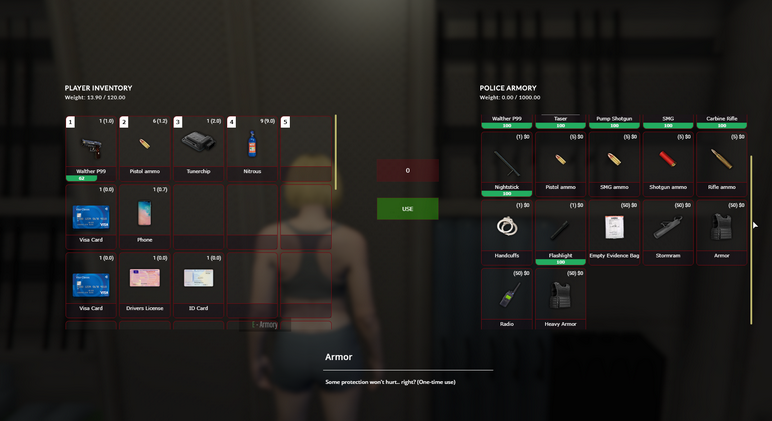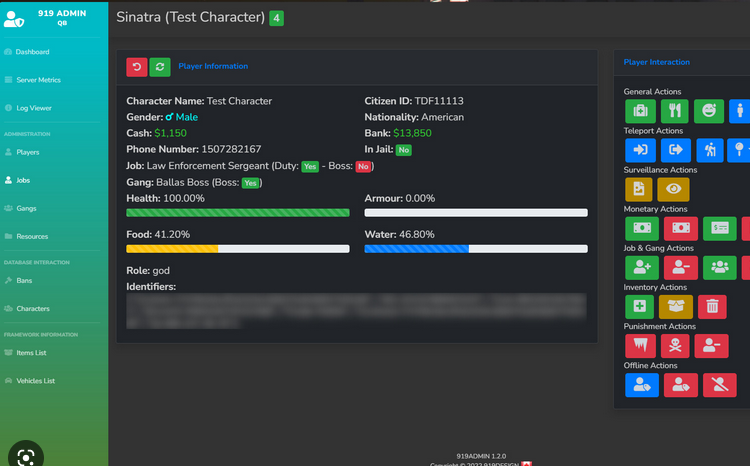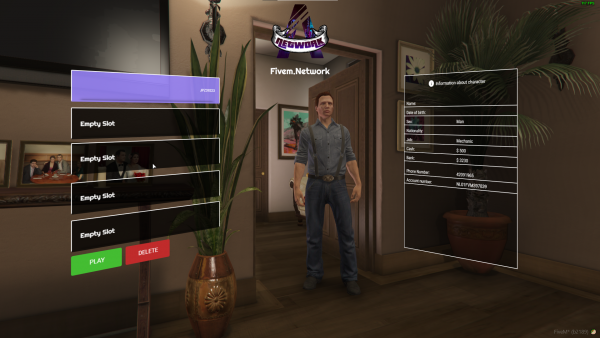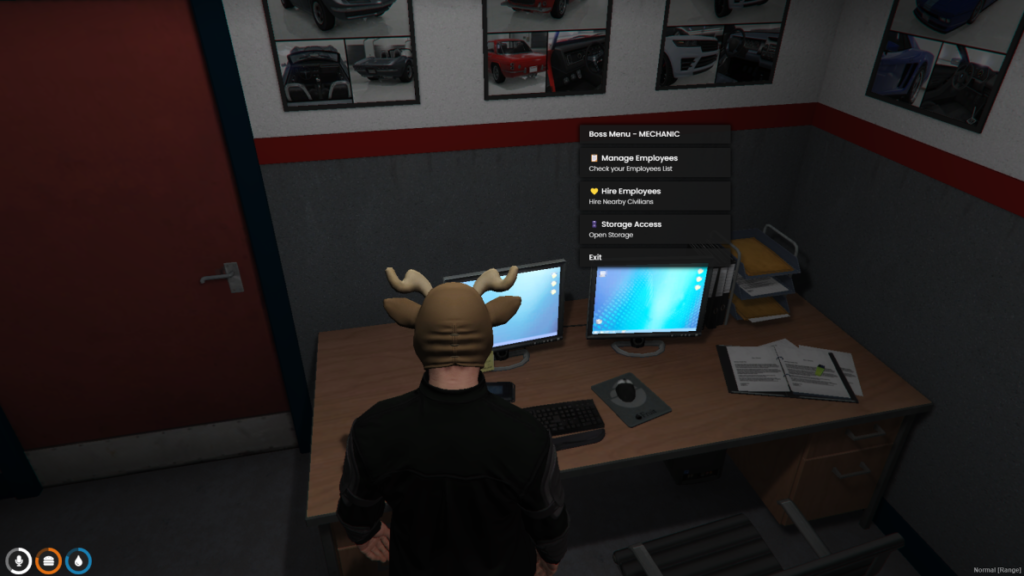Mastering shared.lua in QBCore: Managing Items, Jobs, and Gangs Effectively
Estimated reading time: 5 minutes
- Understand the importance of shared.lua in managing server resources.
- Learn effective item management techniques in QBCore.
- Explore strategies for configuring jobs and maintaining gangs.
- Implement best practices for managing shared.lua to enhance your gaming server.
Table of Contents
- Understanding shared.lua in QBCore
- Shared.lua and Item Management
- Job Management in QBCore
- Gang Management
- Best Practices for Managing shared.lua
- Practical Takeaways for Recruiters and HR Professionals
- Conclusion
- Call to Action
- FAQ
Understanding shared.lua in QBCore
The shared.lua file is a core section of the QBCore framework, used for server-wide configurations. This includes defining essential elements such as items, jobs, and gang structures. By thoroughly managing this file, you can create a more dynamic environment for your players.
Shared.lua and Item Management
Item management is fundamental in any game server environment. Here’s how to effectively handle items within the shared.lua context:
1. Locating shared.lua
The file can typically be found under the folder structure [qb] > qb-core > shared > items.lua. Note that depending on your server setup, it might also be labeled as shared.lua. Learn more about locating the shared.lua file here.
2. Item Definition Structure
To define items, you must familiarize yourself with the Lua table structure. Each item requires specific attributes that dictate its behavior and appearance. Here’s an example of how to define an item:
["energy_drink"] = {
name = "energy_drink",
label = "Energy Drink",
weight = 1,
type = "item",
image = "energy_drink.png",
unique = false,
useable = true,
description = "Boosts your energy!"
}In this example:
- name: Represents the internal identifier.
- label: The name displayed to players.
- weight: The weight of the item, impacting inventory management.
- type: Specifies the kind of item (e.g., weapon, food).
- image: Refers to the visual representation in the inventory.
- unique and useable: Control the stacking ability and usability of the item, respectively.
For further insight into item creation, visit the tutorial on creating an item.
3. Adding Images
To ensure that items are visually represented correctly, you should place item images in the relevant directory, typically found at inventory > HTML > images. The file name must correspond to the image attribute defined in the item structure. Watch a tutorial on this process.
4. Testing and Debugging
After defining or adding new items, restart your server to verify their functionality through the inventory system. If items do not appear or behave correctly, inspect the server console for errors. This process of testing is crucial for maintaining a user-friendly experience.
Job Management in QBCore
Job management also plays a defining role in the QBCore framework. Here’s a deeper look at configuring jobs using shared.lua:
1. Defining Jobs
Jobs are defined in the shared/jobs.lua file, where you can add job-specific attributes as follows:
["delivery"] = {
label = "Delivery Driver",
defaultDuty = false,
grades = {
[0] = { name = "Trainee", payment = 50 },
[1] = { name = "Driver", payment = 100 },
[2] = { name = "Senior Driver", payment = 150 },
[3] = { name = "Manager", payment = 200, isBoss = true }
}
}This structure allows the creation of a job hierarchy, tailoring roles and payment scales to fit the dynamics of your server. For other insights on creating jobs, check out this job creation tutorial.
2. Integrating Functions
To enhance jobs with specific functions (like tasks and permissions), you should associate relevant scripts with each job. These scripts handle job-related activities and interactions with resources available in QBCore.
3. Testing
Similar to item management, it’s crucial to restart your server after editing job configurations. Use in-game commands like /setjob to assign jobs and verify their functionality.
Gang Management
Just like jobs, gang management requires careful configuration. Here’s how gangs can be structured using shared.lua:
1. Gang Configuration
Gangs are defined in shared/gangs.lua, using a structure almost identical to that of jobs. Here’s an example:
["gang_name"] = {
label = "Gang Name",
grades = {
[0] = { name = "Associate", isBoss = false },
[1] = { name = "Leader", isBoss = true }
}
}This setup not only establishes rankings within gangs but also allows for tailoring gang mechanics further.
2. Customization
To create unique gameplay experiences, you might want to integrate specific zones or activities for gangs through additional scripts, enabling features like territorial control or specialized menus.
3. Testing
Validation is essential for gang configurations. Ensure that all defined gangs operate seamlessly by checking console configurations and utilizing in-game functionalities like menus.
Best Practices for Managing shared.lua
Successfully managing the shared.lua file comes down to best practices:
- Use Version Control: Always create backups before making any file changes. Version control will save you from potential data loss.
- Validate Syntax: A little care can prevent big issues. Ensure there are no typos or missing brackets that could disrupt server operations.
- Coordinate with Other Files: Keep your definitions consistent across files like qb-management and qb-target to ensure smooth integrations.
- Regular Updates: Keep your QBCore implementation updated with the latest changes to avoid compatibility issues.
Practical Takeaways for Recruiters and HR Professionals
- Streamlined Operations: By implementing effective management protocols within your game (or business) environment, you can streamline operations, offering a better experience to your users—or in the case of HR, to your employees.
- Employee Engagement: The gamified aspects of job roles and gang membership mirror the necessity for effective job roles and progression within real workplaces, emphasizing employee engagement and satisfaction.
- Data Management: Utilizing a structured approach similar to the QBCore model can help manage human resources data, ensuring clarity and organization in roles and responsibilities.
Conclusion
Mastering shared.lua in QBCore ultimately provides the framework for effective item, job, and gang management, paving the way for a prosperous server experience.
Call to Action
Don’t let inefficiencies hold you back. Visit qbcore.net today to discover how we can help you unlock the full potential of your server or organization with expert AI consulting services. Reach out for more information or a consultation!
Looking for QBCore Scripts? Check out fivemX!
FAQ
What is shared.lua?
shared.lua is a core configuration file in the QBCore framework that helps manage items, jobs, and gangs across a multiplayer gaming server.
How do I manage items in QBCore?
Items can be managed by defining them in the shared.lua file, specifically in the items section, with attributes like name, label, weight, and image.
Where can I access support for QBCore?
For support, you can visit qbcore.net where you can find tutorials and forums for assistance.
How can I create jobs in QBCore?
Jobs can be created by defining them in the shared/jobs.lua file, where you can specify job roles and payment structures.
Can I customize gangs in QBCore?
Yes, gangs can be customized by defining them in the shared/gangs.lua file, using a structure similar to that of jobs.





